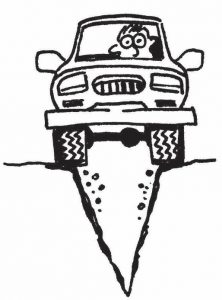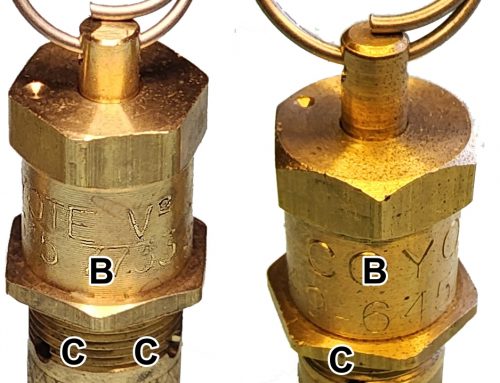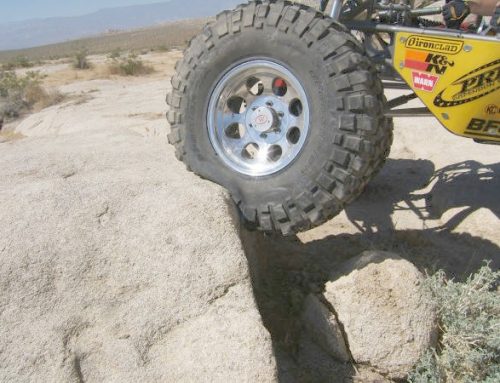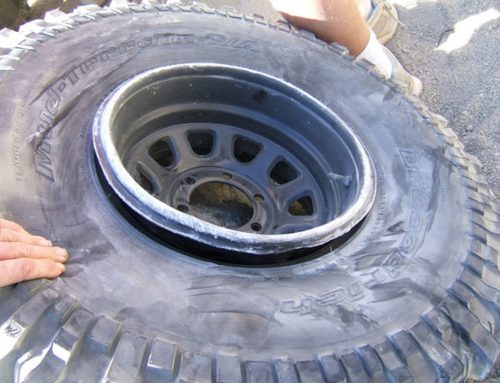DRIVING DEEP VEES
By Harry Lewellyn
From Shifting Into 4WD, pages 112-114
Mother Nature is ever-present. When She rains, She eventually sends water down or across the road. Sometimes, man cuts deep vees to route the water his way, which Mother Nature will eventually adjust Her way. Natural or otherwise, there are two kinds of deep vees. There are those that run across the road and those that run down the road. You cross them as follows.
Your first choice, as already discussed, is to give up if bad. The next easiest choice for virtually all situations is to go around them, but I’m told that’s too easy. The Coyote doesn’t believe in “no pain, no gain” as we’ve all been brainwashed into believing to be politically correct. The ride of life is as easy or as rough as you want to make it. I’ll always choose to paddle downstream, first, every time.
CROSS DIAGONALLY
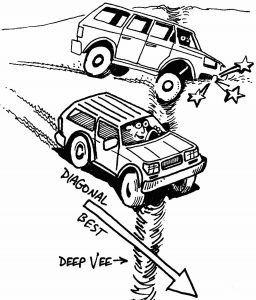
If a significant dip is across the road, approach slowly and cross it at an angle. By placing one tire at a time into the ditch, you are less likely to drag the frame and benefit by less “coming out” resistance. Place two wheels in the ditch, at the same time, and you literally have to lift the entire 4X up and out at a steep angle. In addition, with head on, the front tires have less traction because they are both gnawing away at the steeper deep vee slope. The diagonal approach typically will go something like left front, right front, then left rear and right rear or vice versa.
You also gain ground clearance with this one-wheel-at-a-time approach. The potential and severity of frame-drag is lessened. When you drop two wheels in at one time, you may find a significant left-to-right portion of the undercarriage drags. One wheel at a time hangs up only a portion of the frame, not all of it at once. Traverse deep vees diagonally. It helps smooth out the gentler ones, too. Test this diagonal approach technique on parking lot speed bumps. Diagonal all but eliminates their annoying discomfort….
…STRADDLE WITH CARE!
You also may find Mother Nature channeling Her vital fluid exactly down the middle of the trail, right where you want to drive. In this case, it’s best to drive to one side or the other, but that’s not always possible.
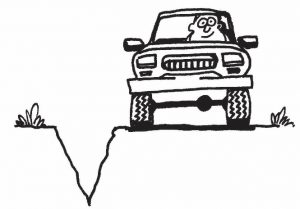
Consider straddling the groove, but pay attention to the getzonta and the gozoffa sections. Ah, I love these technical terms. Does it get wider and deeper ahead? You may be able to straddle the start only to find just like the pink bunny, the vee just keeps on going and going forever. Before you set out to straddle a deep vee, make sure you know how and where you’ll get off.
DRIVE IN IT
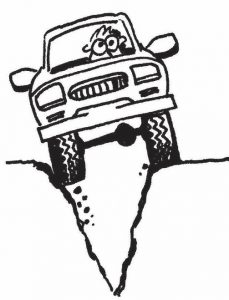
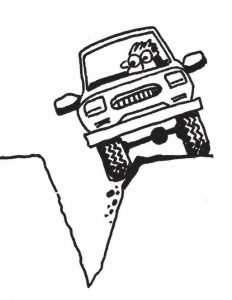
Three “drive in it” alternatives exist. You may use the tire sidewalls, like the tread, to drive one side or the other of the ditch. Here you have to trust that the tread on the high bank will offer enough sideslip resistance to hold you in the desired position. If this full-contact tread is not good, scratch that approach. Actually, in most situations, your sidewalls alone will do much better than you’d ever expect.
The drawings show how you can place the sidewalls on either side of the ditch and I’m never sure what to use. The nearside feels safer and the far side provides more ground clearance. The downside of using the outer sidewall is that it leads to body damage quicker. In contrast, the inside sidewall may cause ground clearance problems sooner than expected.
Driving at the bottom (not shown) may be the ultimate body bender. As you drop deeper into the ditch from either side, the 4WD leans more and may cause body contact. I’d say really crawl up on this alternative.

